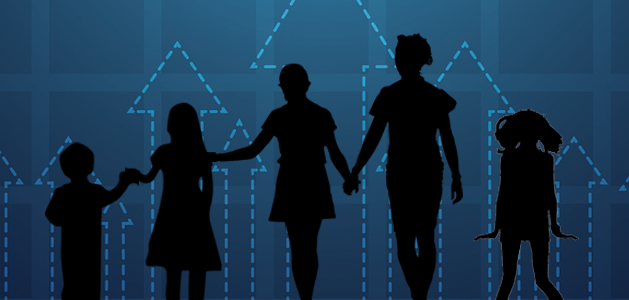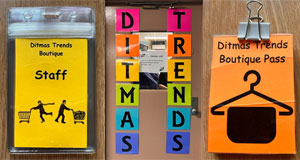What age is best for PBL?
Benefits and challenges of implementing PBL from high-school through primary

For the past twenty-plus years, I have been leading ProjectLearn Academies to help educators successfully implement project-based learning. While I have a model and process that works across grade levels, each workshop is always unique. Training experiences are different because the questions, challenges, and discussions during the process vary widely between primary and high school classrooms.
A lot of people ask, "Which age is best for project-based learning?" Rather than answer this question, let me state that PBL supports deeper learning and has additional non-academic benefits across ALL grade levels!
This does not mean, however, that PBL brings the same sort of benefits and challenges at each grade level. Rather than addressing which age is best, this article considers how PBL implementation changes to match the skills and needs of learners at different ages.
High School
This age lends itself to PBL because… students at a high-school level have developed thinking skills that make them capable of tackling complex, ill-structured problems.
This age makes PBL challenging because… academics in high school are generally high-siloed. Students preparing for college applications also have a wide range of required coursework, which often doesn't leave room for approaches that go beyond cover.
Because students are changing classes and have wildly different schedules, teachers often can't work with other disciplines. If PBL is mandated for all courses by administration, it often results in students having to tackle high-level project work in 6 subjects at the same time!

PBL is essential for this age because… life beyond the classroom is coming quickly for these students. While we can assume these students are more capable of managing a project, deadlines, and collaboration, if they don't have these skills, have we really prepared them for life beyond high school?
Some students already take care of family members outside of school or have jobs, but all high school students need authentic practice applying their skills in contexts outside the classroom. True PBL, done in collaboration with the world beyond the classroom, also forges direct connections between students in school and potential mentors and employers outside of it, helping prepare our students for success the moment they graduate.
To ensure successful PBL implementation… it is essential that all stakeholders — teachers, administrators, students, and parents — see the value of deeper and authentic learning opportunities.
Middle School
This age lends itself to PBL because… Students at a middle school level tend to be highly idealistic. If provided with a great authentic task, many of them simply cannot resist the hook and go above and beyond time and effort expectations to really prove they have reached adulthood.
Many middle schools are also set up with block schedules and teaching teams, making it easier to do work on one project in different class periods.
This age makes PBL challenging because… students begin challenging authority and establishing independence. Their emotions fluxuate widely and growing cognitive abilities often get overshadowed by the rapid physical and emotional changes happening to them at their age.
PBL is essential at this age because… students need safe spaces to learn how to handle new independence. Increasing expectations and transferring responsibility isn't easy, but it can actually help alleviate the behavioral issues that arise at this age.

To ensure successful PBL implementation… try to find projects that meet standards across subject areas so that each teacher can provide academic and coaching expertise necessary for student work in their area. Administrators can provide support by allowing and encouraging teacher's flexibility to adjust schedules and by giving students permission to move between classrooms as needed.
Elementary
This age lends itself to PBL because… in most elementary classrooms, one teacher is responsible for teaching multiple subjects, making it easier to adjust the classroom schedule for project work. Because students aren't segmented into different classes for each subject, they are often more easily able to think across disciplines as well. Elementary students also love to play, leading to an increased willingness to try new things and take risks.
This age makes PBL challenging because… classrooms often have a range of student abilities, with some just mastering foundational skills and others mastering content far above their grade level.
PBL is essential at this age because… students are moving past learning how to read and are now reading to learn. While elementary students may do work to simply please their teacher, PBL gives purpose to their efforts to utilize their reading skills. Teachers can set strong foundations that clearly demonstrate how the content and skills students learn in school directly connects to success outside of it.

To ensure successful PBL implementation… teachers need to support student questioning, thinking and research with scaffolds like graphic organizers and a clear and defined process. Elementary students also need multiple options to practice the skills necessary for successful project work each year.
While the goal of project-based learning is to put students in charge of determining what and how they are creating, they can only choose the best product or artifact if they have experience with a range of options. It is okay for teachers to take more control of elementary projects, but they should design all processes with the release of responsibility in mind so that students can take charge of several aspects of project work by the end of the year.
Primary
This age lends itself to PBL because… much of what is covered are life and learning skills — how to wait in line, how to take care of myself and my property, how to treat others, what I can expect from others, and that I should expect different things from different people depending on what I know about their jobs, etc. These are often the exact "life" skills that a project-based approach seeks to cultivate and are often the perfect place to center a PBL approach.
This age makes PBL challenging because… many educators feel the need to maintain a laser-like focus on math and reading foundations. After all, if you can't do those things, can you effectively tackle real problems? It can also be challenging not to do the thinking and work for students because they are just growing into these new skills.
PBL is essential at this age because… to continue to foster the innate curiosity and creativity of these learners and to make it clear that questions, play, and experimentation on their part are essential to learning.
To ensure successful PBL implementation… focus on problems and scenarios that have more than one right answer and can take advantage of verbal and play-based responses. Provide essential academic supports and scaffolds while celebrating and focusing on skills they have mastered.

PBL makes sense at any age!
A project-based approach to learning has benefits and supports deeper learning at all grade levels. PBL gets students to:
- Think deeply about the content they are learning.
- Develop leadership, teamwork, time management and other essential life skills.
- See how the things they learn in school connect to the world beyond it.
- Clearly demonstrate that students need and can be responsible for learning.
- Give purpose to student efforts.
While implementation and process may vary, students benefit from project-based learning at any age.










